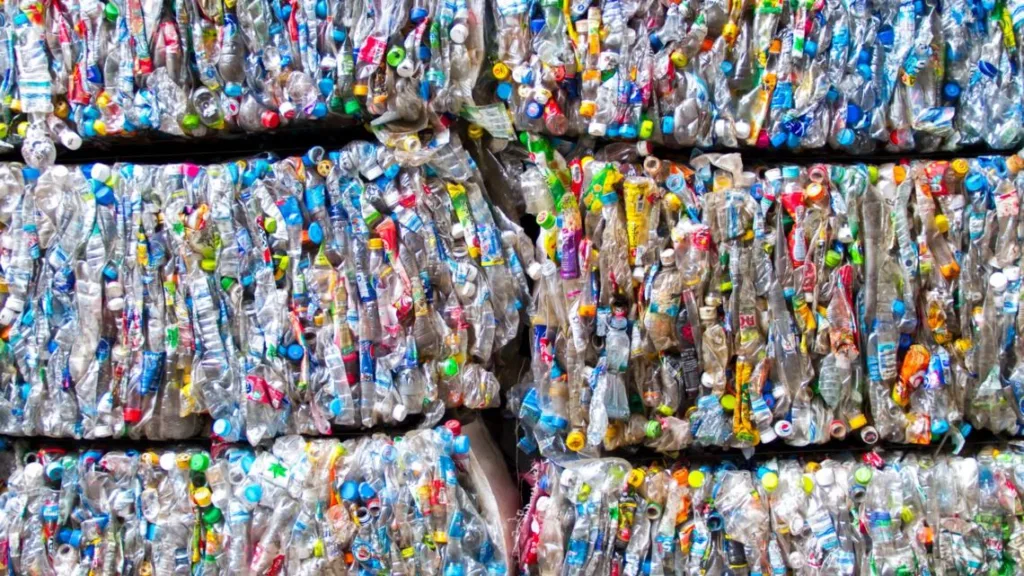Authors
Brendan Edgerton
The shift from efficiency to expediency
My father grew up on a farm in eastern North Carolina during World War II. He’s shared stories about the tough financial times the family would go through depending on the crop yield that year.
They were under constant pressure to produce the most value from their corn field and livestock to make ends meet. Wasting anything – the harvest, animal feed, dinner, time – was unacceptable because it cost the family too much.
At this same time, the American economy was booming. Companies started to hastily produce goods, and expediency was prioritized over efficiency, resulting in US national industrial production doubling in only four years.
Waste had become an acceptable byproduct of success.
The dichotomy between these two production mindsets – to waste or not to waste – still exists between the current “take-make-dispose” model, and the circular economy we’re moving towards today.
But the need to transition to circularity is more clear now than ever.
A growing population and expanding middle class will place increasing pressure on natural resources, creating supply challenges for food, water, energy and scarce minerals.
The circular economy provides an alternative path that optimizes resource production and consumption, to encourage growth and development within the bounds of our planet.
Grasping the circular economy
In its simplest form, the circular economy calls for practical, financially-driven resource efficiency and effectiveness.
The circular economy is capturing the attention of business leaders and policy makers around the globe.
But, like business’s adoption of other sustainability practices, companies are implementing elements of the circular economy at their own pace. Geography, industry, leadership and opportunity for disruptive innovation are all factors in determining the rate at which a company integrates circular thinking into their operations.
Many companies still struggle to fully grasp the concept of the circular economy, its implications on their business and the initial steps needed to get started. For many, the circular economy has become so nebulous and mystified that it feels a monumental just task to know where your company fits in.
WBCSD’s recently published CEO Guide to the Circular Economy is an excellent introduction for CEOs and high level leaders. But now, a more detailed guidance is needed for technical experts who can help encourage systemic change in specific areas of the company – whether in design, manufacturing, finance or elsewhere.
Circular economy experts must be more specific, tangible and actionable in the way they communicate about circularity to the unconverted.
We need to simplify. Let’s say “reuse” instead of “upcycle,” “self-sufficient” as opposed to “regenerative” and “simplify” in place of “dematerialization.”
To effectively scale the adoption of the circular economy, we must deconstruct big, sometimes messy concepts into digestible morsels that every individual can connect with.
Empowering the individual
Everyone has a role to play in the circular economy. The challenge lies in informing and empowering people about the specific actions they can take to mobilize their companies towards circularity.
WBCSD aims to do exactly this with their Practitioner Guide to the Circular Economy, launched today and free to the public.
The Practitioner Guide lists over 70 strategies that one can use to make their organization more circular, depending on the function they serve. Whether one designs, buys, makes, sells, disposes or finances for his or her company, there are multiple strategies to consider.
The Guide helps practitioners consider all strategies and includes:
- Over 40 case examples demonstrating implementation of various strategies
- Glossary of over 120 circular economy-related terms
- Library of over 250 publications and tools
- Opportunity for visitors to submit resources and examples
There is no other resource that encompasses the key elements of the circular economy and presents it in a tailored format accessible to non-sustainability professionals.
Like my father’s family, the global community is slowly starting to realize that we’re all in this together and that we all have a role and responsibility to undertake.
If we are to see all nine billion people living well, within the boundaries of the planet by 2050, waste in all forms must be unacceptable.
How will you play your part? Find out by exploring the Practitioner Guide today.
Read more about our Practitioner Guide to the Circular Economy
WBCSD news articles and insights may be republished in accordance with the Creative Commons Attribution-NonCommercial-NoDerivatives 4.0 International Public License, and in accordance with our Privacy Policy. All Content must be featured with due credits.
Outline



